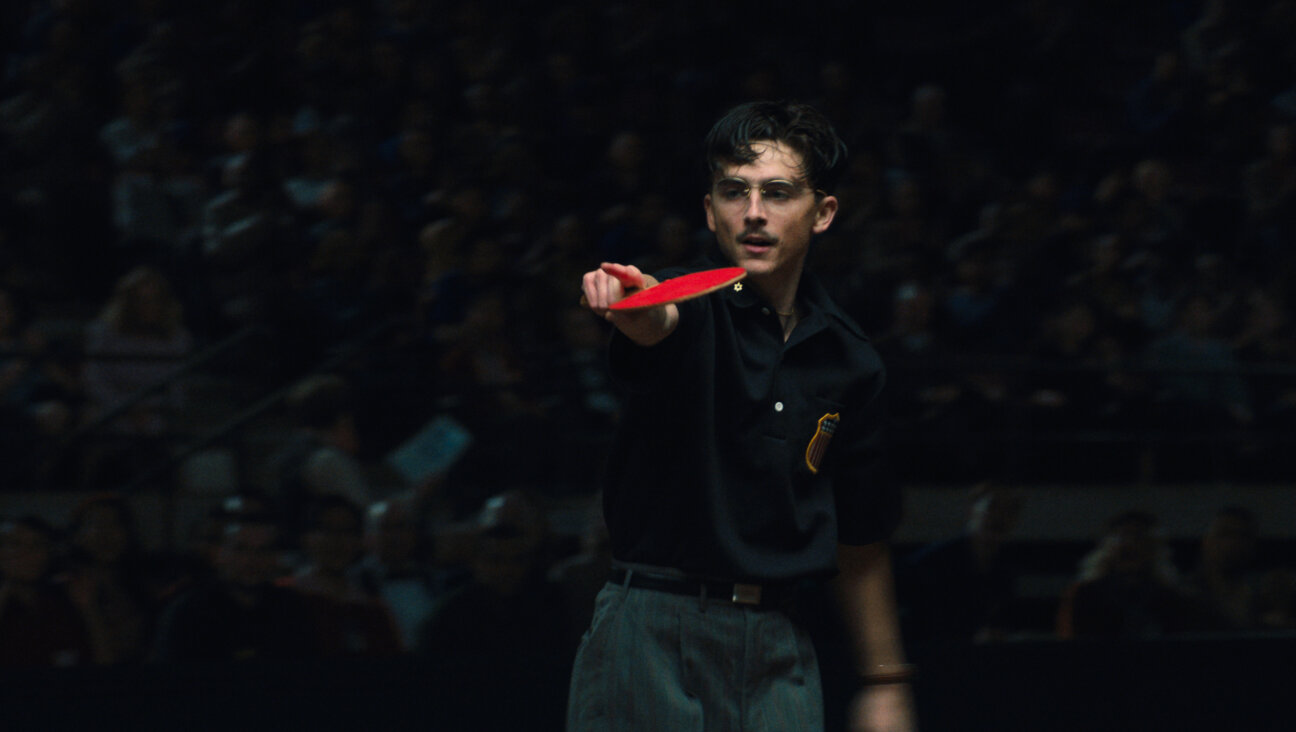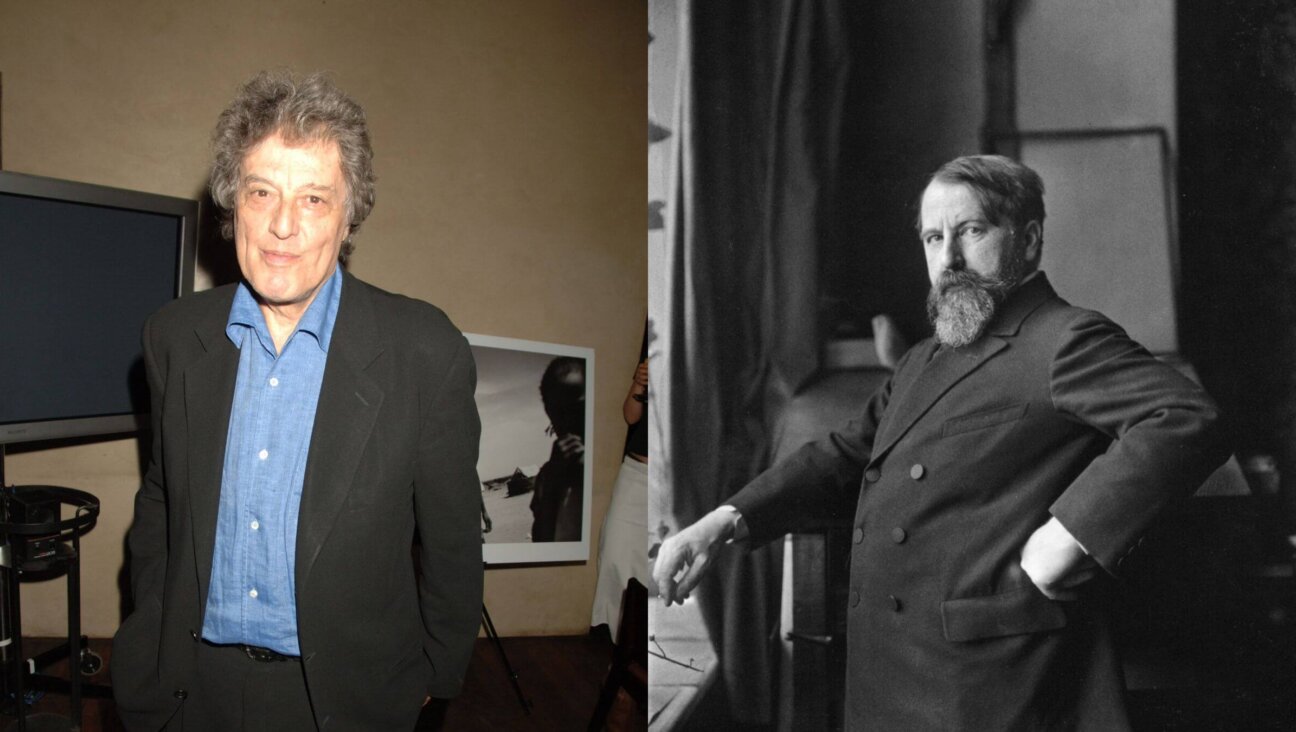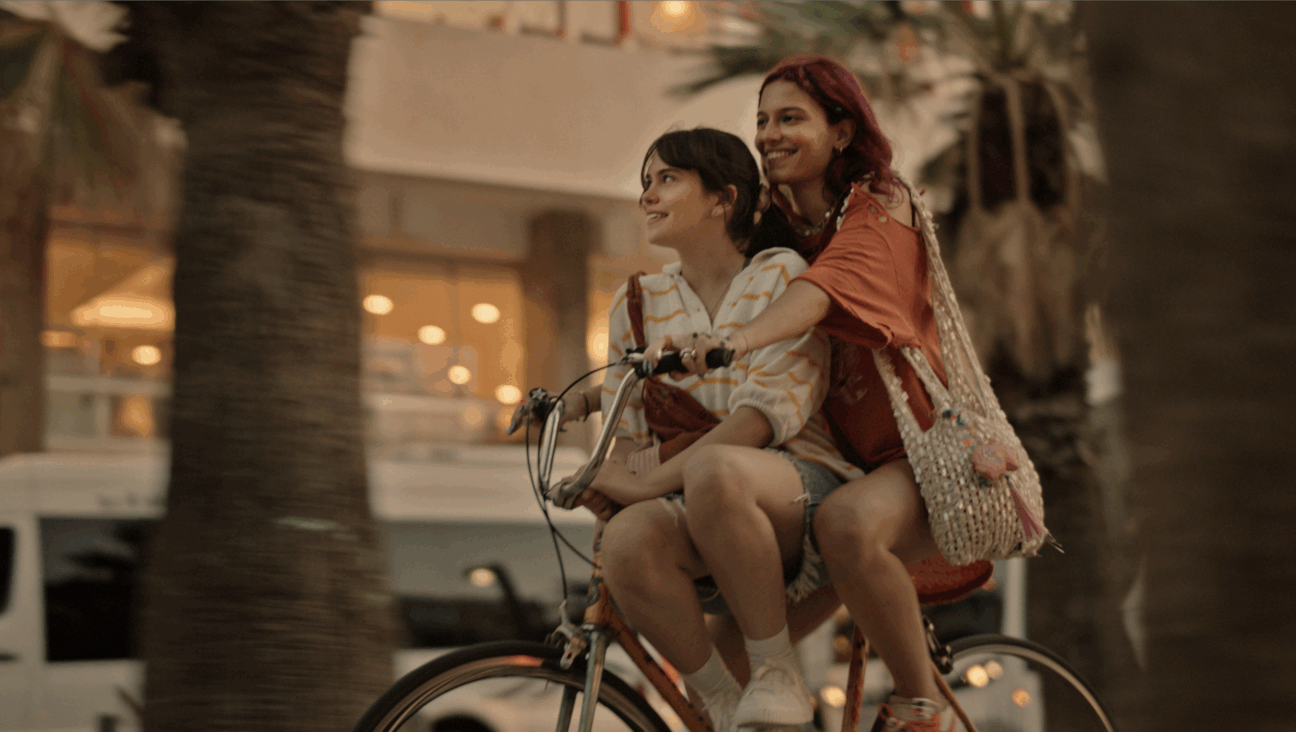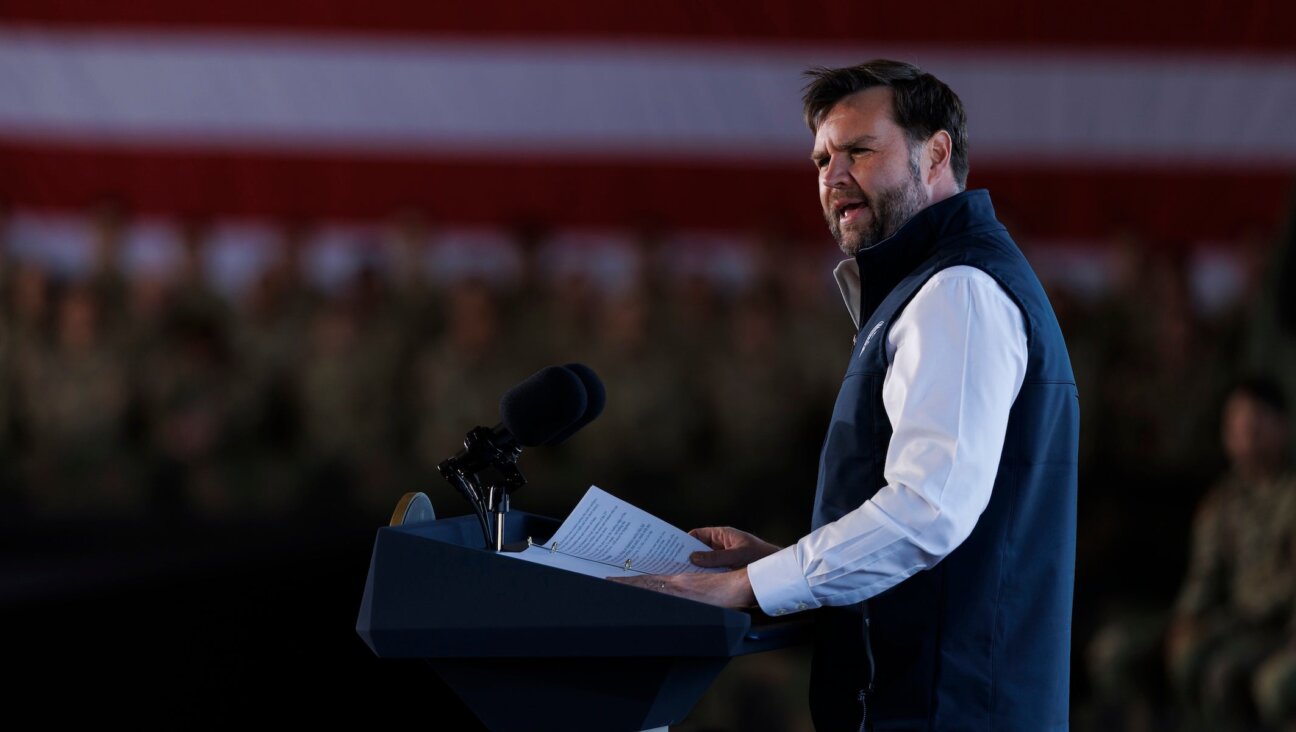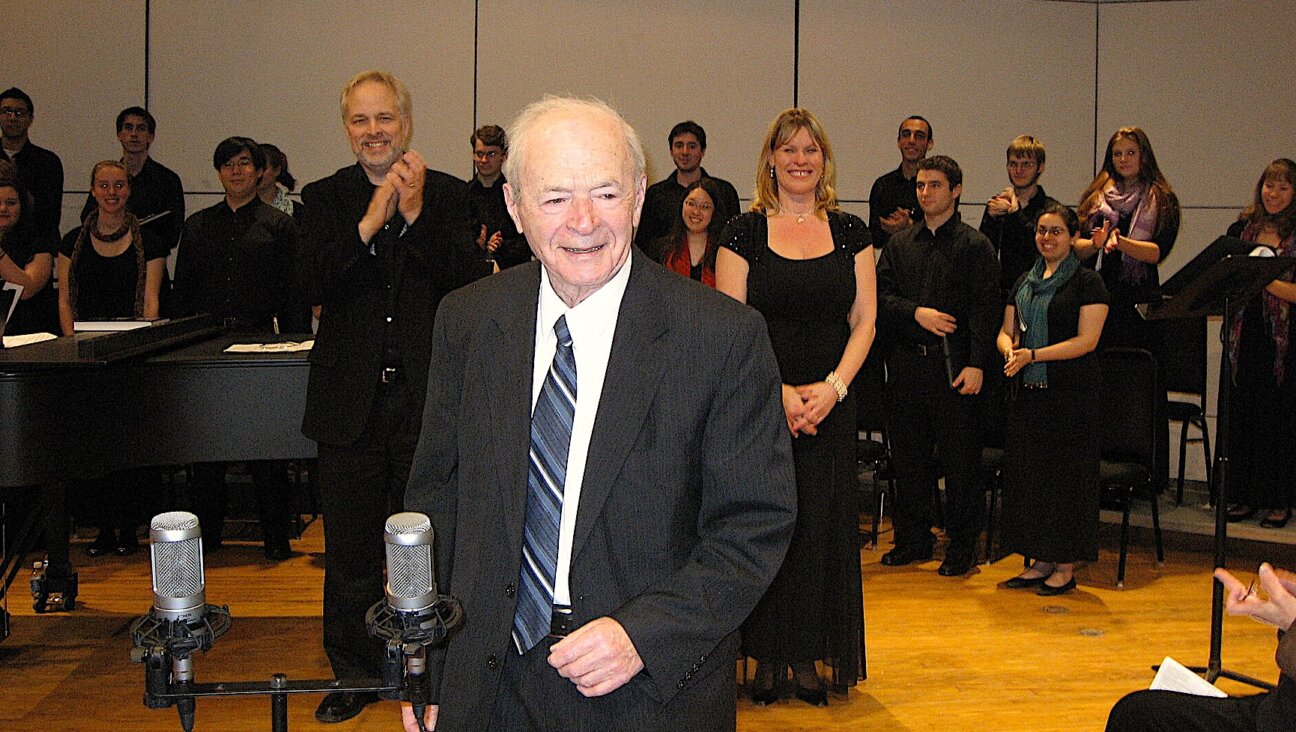The Old Master Of Tel Aviv
When you are at the top of your profession, enjoy an international reputation in the art world and have achieved financial success and critical acclaim, what do you do for an encore?
That’s the question that faces Menashe Kadishman, arguably Israel’s most brilliant artistic export. His works can be found in New York’s Metropolitan Museum of Art and Museum of Modern Art, the Hirshhorn Museum and Sculpture Garden in Washington, D.C., and in London’s Tate Gallery. He has been exhibited from Japan to Uruguay and in practically all of Western Europe. He has won numerous prizes and honors, including the Israel Prize in 1995.
Kadishman’s worldwide renown rests squarely on the backs of sheep. At the 1978 Venice Biennale, the former kibbutz-shepherd stole the show by making a work of art using a flock of live sheep whose backs had been painted with various colors. With the sheep as the subject matter, the sheep pen becomes a picture frame, and the animals become swirls of color constantly moving throughout the canvas. Offering a quirky take on “action painting,” Kadishman is no doubt the first artist to conceive of colors that behave, well, sheepishly. For many, their appeal lies in a combination of innocence and irreverence.
Culture is defined, so goes a joke of the mid-20th century, as the ability to listen to the “William Tell Overture” without thinking of “The Lone Ranger.” Similarly, there is hardly an Israeli art lover who can think of sheep without conjuring up Kadishman. “In each Christian house, there is a Santa Maria. So in each Jewish home, there will be a sheep. “What’s wrong with that?” the artist asked.
The sheep are his most popular and, at the same time, most harshly criticized works. Some see them as a fetish, others find them merely shtick, but most realize that Kadishman has created an instantly recognizable oeuvre. Picasso has his cubist two-eyed profiles, Alfred Hitchcock appears in his own films, Elton John flaunts his oversized eyeglasses and Menashe Kadishman herds his flock across the artistic landscape. And he has raised these wooly creatures to pop-icon status, offering thousands of paintings of them. If the artist puts himself to sleep by counting sheep, he never would need to count the same wooly creature twice.
Though most see the sheep as his most famous work, Kadishman himself identifies the moment of his own success to have come in 1970, when he offered “Trees,” an exhibit at New York’s Jewish Museum. The artist filled nearby Central Park with cast-iron rectangular sheets painted yellow, the same yellow found throughout the city on taxicabs, street signs and traffic lights. The polished sheets reflected the shadows of the trees and seemed to be quite at home in the urban parkscape, a modest merger of technology and nature.
Kadishman, famous for his ample girth, still sports a full beard and a head of curly, unruly hair. At 72, he is grayer now, and his fierce lionlike look is softer, sleepier. He growls less often. As before, he has a warm, welcoming smile.
“Well, you can still see I’m working every day,” Kadishman said as he gestured expansively in his overcrowded Tel Aviv studio, coming to rest on his latest effort, a model for an ambitious sculpture dedicated to Israel’s pre-state military underground. Commissioned by the Municipality of Ramat-Gan, the piece is a 4-meter-high iron sculpture paying tribute to the Hagana, Lehi and Etzel. The final design shows an upside-down figure whose feet support a plateau of land on which grow three cypresses. Off to the side, a female flutist sits.
The upside-down grimacing man was born from a poem by Uri Zvi Greenberg about a World War I soldier shot dead while scaling a barbed-wire fence, his feet silhouetted against the night sky. Kadishman’s warrior lies under the ground, his sacrifice becoming the nation’s building blocks. Nourished by his body, the land is regenerated. The plan is monumental, literally and figuratively. It will be erected in a circular plaza with three new streets leading up to it, each one named for one of the movements.
“Actually I have two final versions. In one, the three cypresses are on the same level ground; in the other, they are set on the side of a hill,” he said. “I’m going to go with the level trees. Otherwise the movements will start to argue whose cypress is the highest.”
And that’s only part of his activity. He will have a major retrospective at the Tel Aviv Museum of Art next year, a documentary film about him is under way, his images have been requested for a forthcoming book on Jewish art and culture, and he is still exhibiting new work all over the world.
His most recent exhibit was “Shalechet” (“Falling Leaves”), an installation that toured Germany, the Low Countries and Israel before reaching its permanent home in Berlin’s Jewish Museum. The installation is composed of more than 20,000 iron heads scattered helter-skelter on the floor. Wall to wall, these groaning faces — 5 pounds and approximately 5 inches in diameter each — represent Holocaust souls who demand their stories be told and their spilled blood avenged. The spectator is invited to walk through this rocky beach of suffering humanity.
Kadishman recently sat down with the Forward for a talk on his life and work, and he brought to the table the wit and insight that have become almost as trademark as his sheep.
Forward: How do you react to criticism?
Menashe Kadishman: Look, any artist over 60 should just paint for himself and not give a damn about criticism!
Forward: So you don’t give a damn?
MK: Almost.
Forward: How do you wish to be remembered?
MK: [With] a museum.
Forward: Like the ones to Reuven Rubin and Nahum Gutman?
MK: Yes. At least.
Forward: Who influenced you most when you were a student?
MK: Henry Moore. Someone once asked him, “Why do you make small heads and holes in the belly? Maybe you should go to a psychiatrist.” Moore responded, “If I go see a psychiatrist, maybe I wouldn’t do it anymore.”
Forward: When did you make it as an artist?
MK: I received a sculpture prize in Paris in 1967, but it wasn’t until 1970 when I did my “Trees” in Central Park that I became famous.
Forward: Compare then and now.
MK: I think the 1960s was a better period. People had hopes for good things. Now it looks like the world stinks.
Forward: Isn’t this a result of your getting older?
MK: Yes, to some degree. When we were young we wanted our art to change the world. But when Hitler bombed Guernica, did Picasso’s painting have any effect? I thought that maybe some things of mine could do good. My sculptures didn’t change the war in Lebanon. Maybe art is not about changing anything. It’s about telling you reality.
Forward: Where does the artist rank in Israeli society today?
MK: No one wants to hear the opinion of an artist. Even football players are more important than us.
Forward: What makes a great work of art?
MK: Recently I went to the Prado, where I saw a Goya painting of a snowstorm. I got cold standing in front of it.
Forward: Any regrets or missteps?
MK: My mistake, if you can call it that, was to come back to Israel. It was [American sculptor] George Segal who told me if I had stayed in New York, I could have become one of the great American artists. But I really have nothing to kvetch about. When I lived in Chelsea [in the 1980s], I would walk down 23rd Street and maybe get a nod or two. But here in Israel, when I stroll down Dizengoff Street, I’m treated just like an Old Master.
